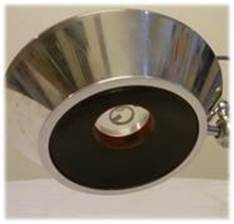I was introduced to the field of HIFU, (High Intensity Focused Ultrasound) approximately 18 years ago. At the time, I was a student looking for a side income and software development for the ExAblate at Insightec (a focused ultrasound device that allows targeted tissue inside the body to be treated without the need for incisions) helped pay the tuition.

A few months into my work, I had the fortune of seeing a patient who just had uterine fibroid ablation. Once the procedure was over, the patient got up from the procedure table, and sat down to drink coffee and chat with the clinical team. This was the first time that the full impact of the benefit of this non-invasive technology hit me.
HIFU is a novel technology that has recently gained clinical traction, with three HIFU devices (SonaCare’s Sonablate for ablation of the prostate tissue, EDAP’s Ablathem for ablation of the prostate tissue, and InSightec’s ExAblate for treatment of essential tremor) securing FDA approval in the past 12 months.
With HIFU, the treating clinician focuses an external high intensity ultrasound beam at a target inside the patient body. At the focal point the acoustic intensity is high enough to induce bio-effects, most common and understood of which is thermal ablation.
With HIFU, the treating clinician focuses an external high intensity ultrasound beam at a target inside the patient body.
Thus, HIFU enables a clinician to perform noninvasive thermal ablation of tissue at a desired depth and size. The benefits to the patient are obvious, as patients will always favor a non-invasive approach over an invasive approach, as long as efficacy and safety are similar.
Currently, the world of HIFU devices is composed mostly of high-end premium platforms, as the clinical implementation of HIFU technology is new. These devices are expensive, require significant logistical support, and in some cases, even disrupt the day-to-day routine of a medical practice.
Therefore, to justify expenses, the selected conditions for which HIFU is presently used are mostly “high-end” ones like prostate cancer, neuro-functional disease, liver tumors, etc.
As someone with a software background, I view the HIFU field as being in a similar state as the world of computing when the only available systems were main frames located in corporate headquarter basements.
Obviously the personal computer “revolution” has yet to arrive to the field of HIFU in the sense that there were no low-cost personal HIFU devices addressing small scale medical practice applications.
This insight was part of our vision when FUSMobile was established with the goal of providing focused ultrasound therapy for every practice. We’ve adopted a fundamentally different approach searching for a solution that could address the economical and logistical needs of a single physician or small scale medical practice.
Once the procedure was over, the patient got up from the procedure table and sat down to drink coffee and chat with the clinical team.
In a sense, we were set on developing the laptop equivalent of the HIFU world. It should have the potential to replace frequent out-patient procedures that are done on a daily basis yet get relatively low reimbursement coverage.
While exploring this approach, we discovered several additional advantages to targeting a small scale and/or single physician practices and low cost devices. Faster adoption is one, as the capital, logistical and proficiency entry threshold are relative low.
Faster sale cycle is another, since the decision maker is usually also the customer and owner. And in a small scale medical practice, turf war rarely happens. Low cost devices enable lower coverage per procedure, and in some cases, even out of pocket payment—an option that is highly unlikely with a procedure that costs thousands of dollars.
But how does one go about developing a device that has a low cost and simple logistical requirements, yet relies on novel technology to provide superior health care? Sadly there is no one answer. For Ron Aginsky and I, the founders of FUSMobile, the answer was identifying an intersection point between three spheres:
- The technological advantages HIFU has to offer
- Selected clinical indication or group of indications
- The economic realities of the relevant costumers, as derived from the selected indication above
Per clinical indication and technological operating parameters, we calculated the development and manufacturing costs as well as financial model for our customers. For each of the evaluated indications, we had to develop a comprehensive understanding of the economic realities of our customers, and more specifically, the procedure we were targeting to replace.
At FUSMobile, after performing the above mental exercise multiple times on multiple indications and at various levels of details, the outcome was a selection of pain management procedures. The most common procedure in this group is facet joint ablation with about 5 million potential patients a year in the USA and around 400,000 annual procedures.
For successful outcomes of facet joint ablation, a single point of ablation per joint is required. This means that a significant simplification of the platform hardware is needed, reducing its cost and complexity. Other considerations at play included the risk profile of the procedure, existing alternatives, training demands and the value we could bring to patient providers and payers.
So after much planning, our platform – The Neurolyser – was born. As is often the case, the Neurolyser baby steps included several iterations of hardware and software development. Now I’m happy to share that our platform has graduated following extensive bench top and preclinical R&D, and it is ready to go out to the world, but this is a matter for a different blog…
Are you interested in the latest research and clinical applications in HIFU? Visit the Journal of Therapeutic Ultrasound and sign up to receive article alerts
Comments